In pictures: Belarus rocked by anti-government protests
- Published
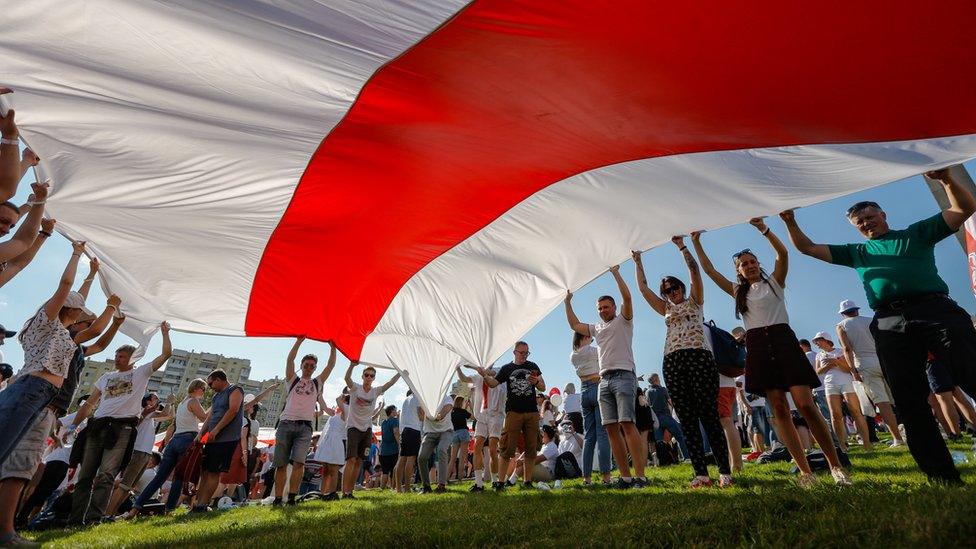
Belarus has been gripped by unprecedented mass protests, with hundreds of thousands of people taking to the streets in recent days.
The mounting anger was triggered by a disputed presidential election on 9 August that saw long-time authoritarian leader Alexander Lukashenko re-elected despite widespread allegations of vote-rigging.
The wave of anger has been fuelled further by police violence towards opposition supporters.
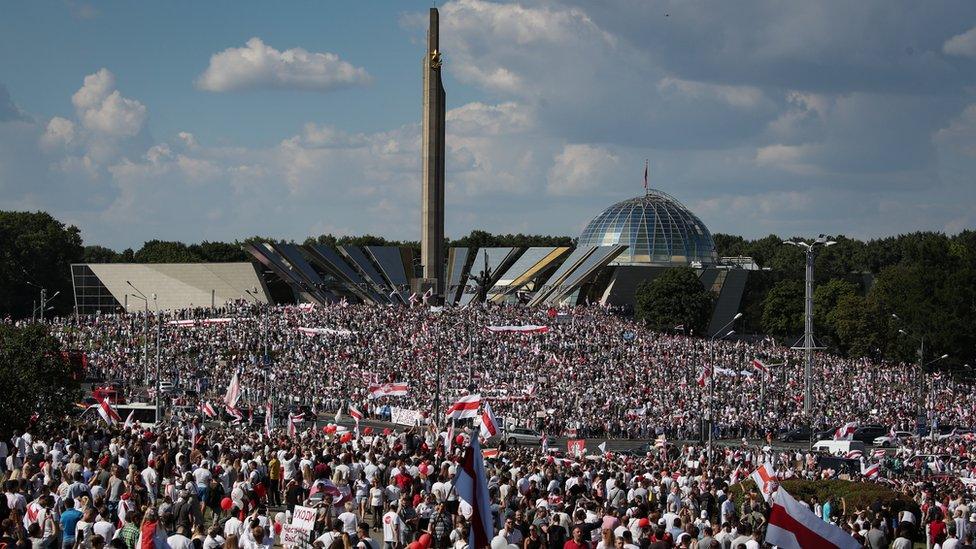
An opposition rally in the capital, Minsk, on Sunday was described by local media as "the largest in the history of independent Belarus".
Unofficial estimates for the gathering ranged between 100,000 and 220,000 people. A rival rally was also held in the city, but attracted far fewer people.
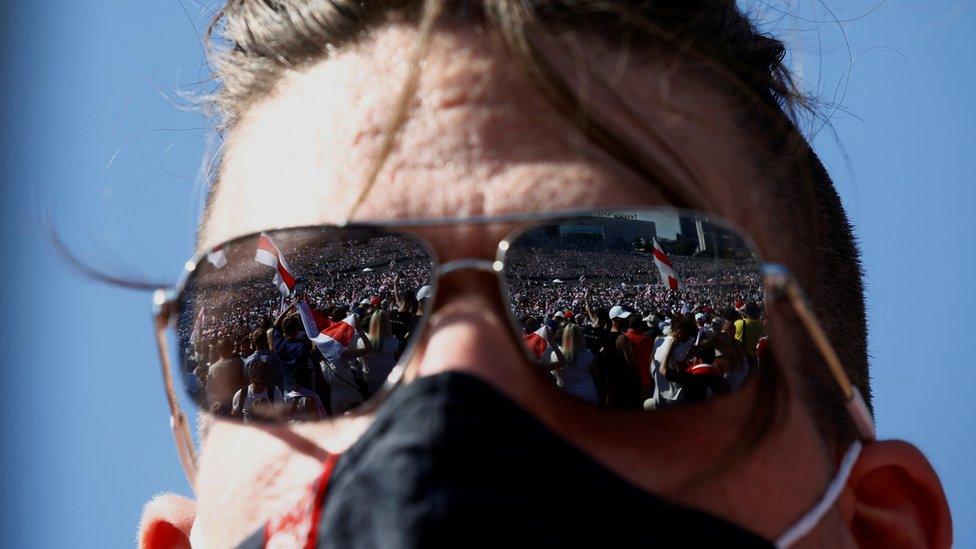
Prior to election day, there were widespread fears about possible falsifications. No independent observers were invited and numerous irregularities were documented.
The Central Election Commission said Mr Lukashenko had won 80.1% of the vote and opposition candidate Svetlana Tikhanovskaya 10.12%.
But Ms Tikhanovskaya, who left for Lithuania after denouncing the results, insists that where votes were properly counted she won at least 60%.
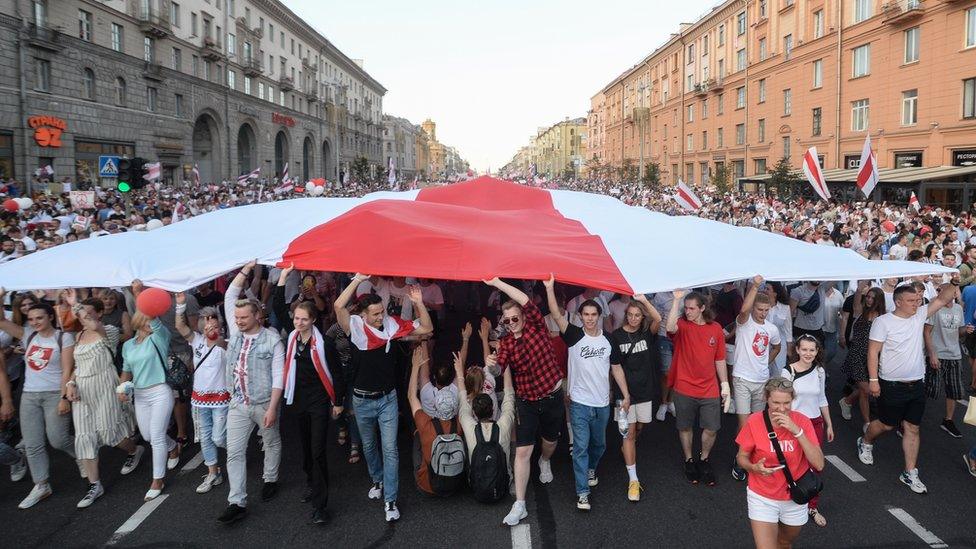
Disbelief and anger at what appeared to be quite brazen tampering with the results quickly spilled out onto the streets.
This anger has snowballed in recent days, culminating in Sunday's rally - the largest yet.

The opposition flag - white with a red stripe - has become synonymous with the movement and is seen at every rally.
Protesters also carry flowers and balloons to show that their movement is peaceful. In the above image, demonstrators can be seen forming a heart shape during a solidarity rally in the Czech Republic.
Solidarity rallies of varying sizes have also been held in Romania, Poland, Ukraine and Russia.
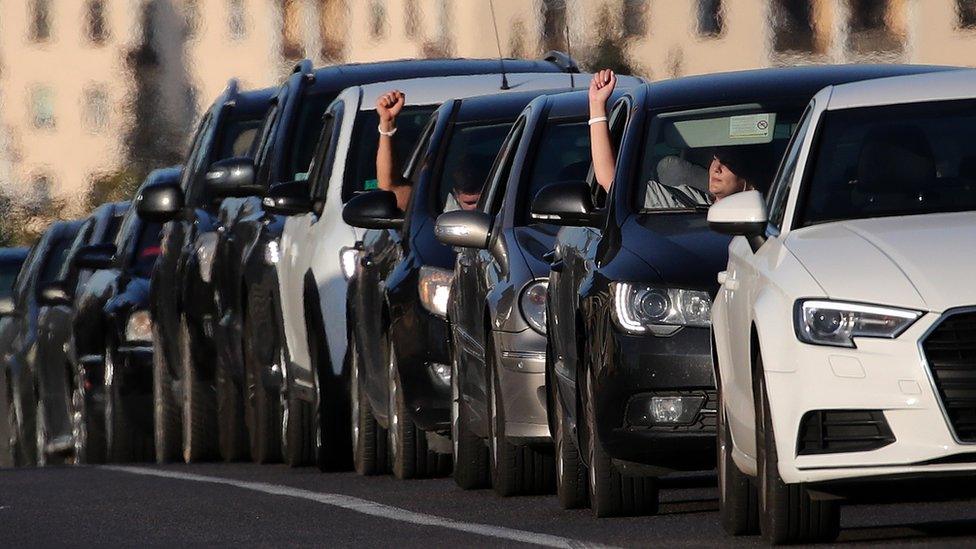
As well as the flag, white bands have also become a symbol of the protests.
Here, drivers are seen raising their wrists and showing their bands as an expression of solidarity with the demonstrators in Minsk.
Throughout the unrest, drivers have honked their horns in support of the crowds prompting people to wave back and cheer.
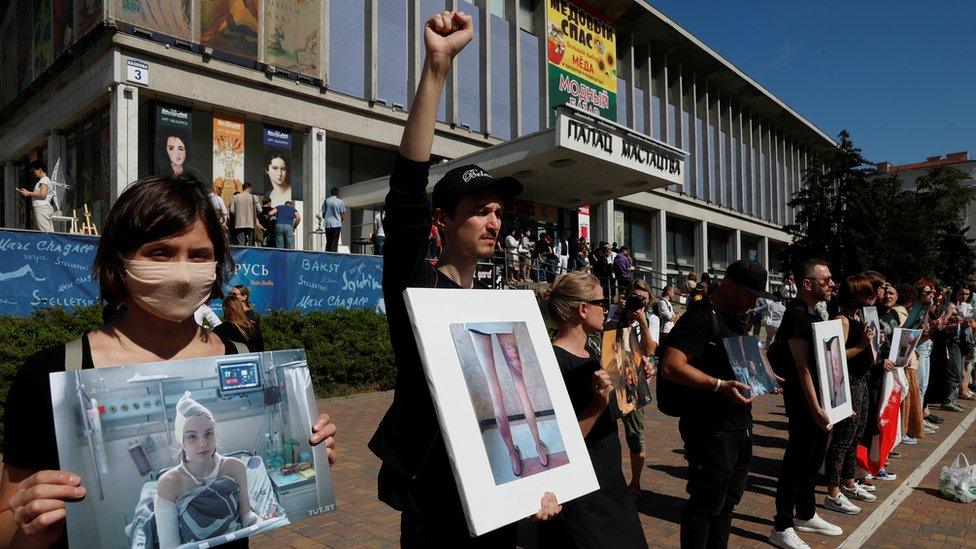
On the night after the election, violent clashes led to 3,000 arrests in Minsk and other cities. Police fired tear gas, rubber bullets and stun grenades to disperse crowds.
Details quickly emerged of alleged police brutality, with detainees badly beaten and forced to endure overcrowded prisons. Many sought medical help and posted pictures of their injuries on social media.
In the above image, demonstrators hold pictures of people who were injured in a recent opposition rally.
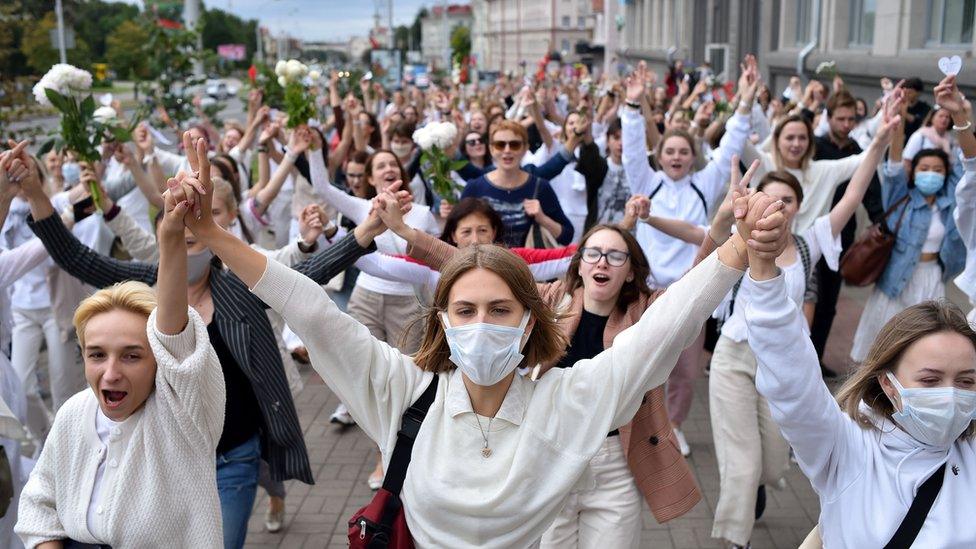
The allegations of police brutality led to a new wave of demonstrations.
Friends and relatives gathered at detention centres. Women dressed in white and carrying roses linked arms and marched through the streets.
Women marched in big numbers down Independence Avenue, the main thoroughfare in Minsk, and were accompanied by a chorus of hooting cars.
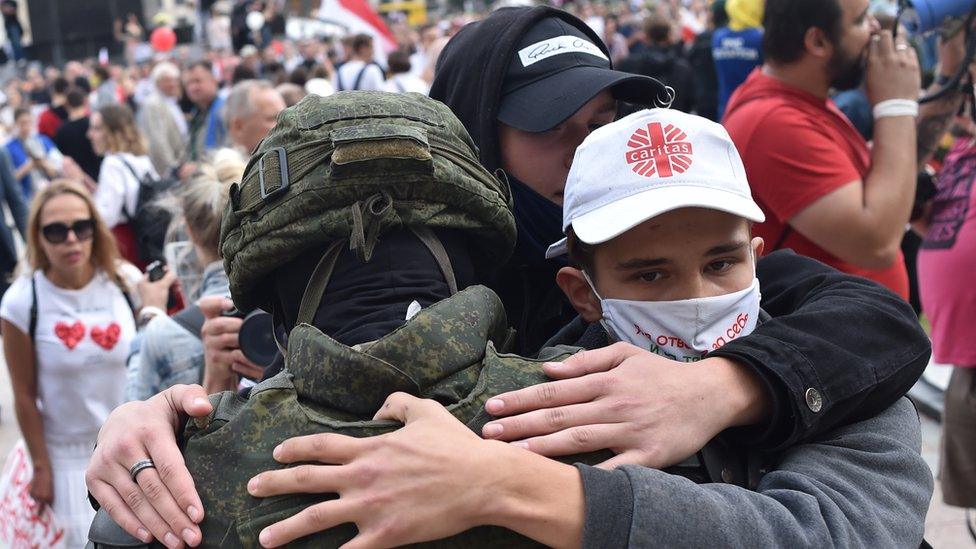
While reports suggest the majority of the security forces and police remain loyal to Mr Lukashenko, striking pictures have emerged of protesters hugging law enforcement officers.
This one was taken in central Minsk during an opposition rally last week.
All pictures subject to copyright.
- Published8 September 2020
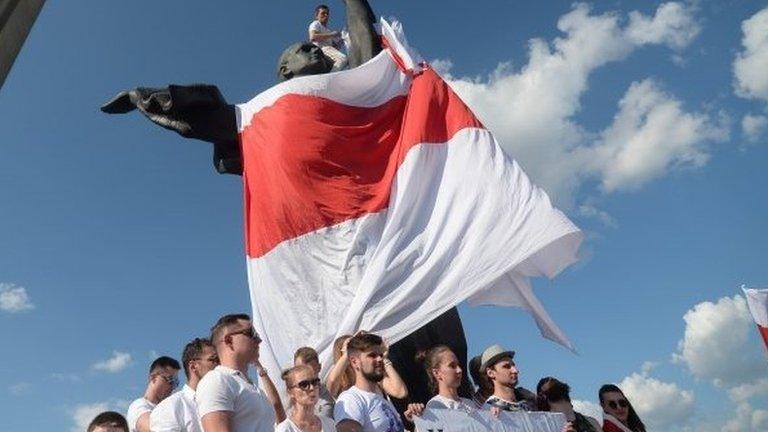
- Published17 August 2020

- Published15 August 2020
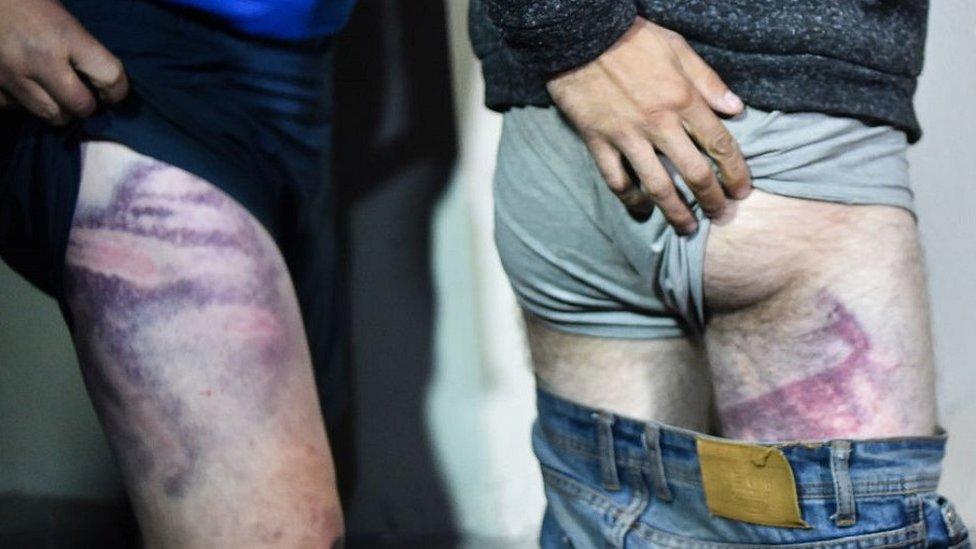
- Published15 August 2020
